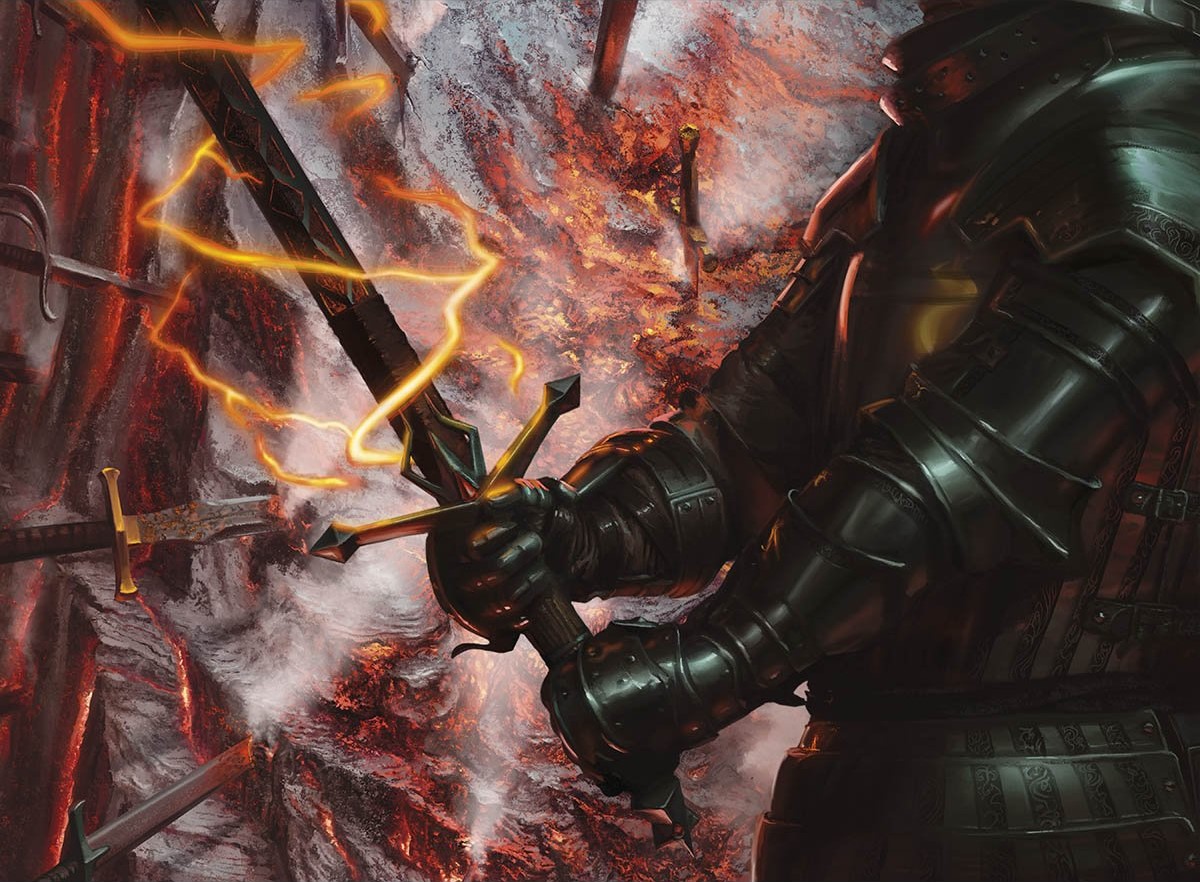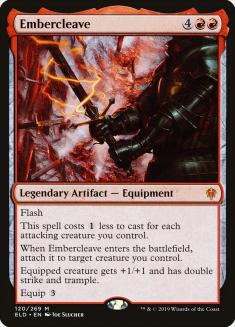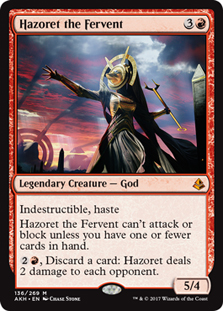Hello, and welcome back to this week’s installment of Sullivan’s Satchel. My children’s schools are shut down for the next three weeks at least, and maintaining any sort of normalcy in our present circumstances is very challenging, so there’s something cathartic about the routine of digging through the questions I’m sent and cobbling together a column. Hopefully everyone else living in impacted areas can create their own therapy out of whatever is available.
It goes without saying that Star City Games did the right thing in cancelling the next few months of SCG Tour shows, in accordance with every wise protocol being generated right now. I think it is important for institutions to actively intervene; I think I would have just gone to SCG Baltimore had the show not been cancelled, and in retrospect I’m glad that decision was taken out of my hands, and everyone else’s. Hopefully everything can return to some sort of regular schedule soon, but I think the only path to that is taking extreme measures now.
With that, a Twitter DM-only mailbag. Of course [email protected] still works for all questions, but my inbox is so flooded, and the questions on Twitter take a slightly different shape, so I wanted to devote an entire article to it. With that:
From @mechadenny:
What legal obligations do tournament organizers and WotC have in the face of pandemic? What ethical obligations?
I’m not that well-equipped to speak to legal obligations, other than that I assume that TOs (and everyone else) are required to fulfill their obligations, including emergency orders. Shortly before SCG Baltimore was cancelled the Governor of Maryland issued some new guidelines including barring public gatherings of a certain size. I don’t know if that would have forced SCG’s hand to cancel the event regardless, but it definitely didn’t hurt matters that the event would have been running afoul of public guidelines.
I do believe TOs have a significant ethical obligation to act in accordance with regulations and even beyond that, because a ton of people are so bad at exercising good judgement in these spaces, and the externalities of this situation are such that it is imprudent to let people exercise their own judgement. A pandemic has all the requirements for atrocious collective decision-making – non-deterministic risk and consequence, no obvious sensory queues for when a situation is particularly risky, consequences not evenly spread among everyone, etc. Just a lot of opportunities for good decision-making where the risks and rewards are vague to each individual in real time, which is a recipe for the worst among us to represent material danger to themselves and everyone else.
Related, this is a space that clearly highlights where a lot of American-style Libertarian thinking transparently breaks down. One person’s actions have the ability to cause significant harm to a lot of people regardless of the actions of the latter party, and so concepts like restraining someone’s consenting behavior being “violence” (even the nature of “informed consent”) doesn’t make any sense. There is going to be a ton of “violence” (you not being able to go to a bar or Magic tournament or me dying, whichever), and so we have to make a consequentialist determination about which kind of “violence” we collectively find more abhorrent (by the way, we do this constantly, just in places that are less obvious.)
Since a handful of people are extremely bad at navigating these waters and because it only takes a handful of people acting badly to create massive negative externalities, it is incumbent on people and institutions that profit from large gatherings, like Wizards of the Coast (WotC) and Star City Games, to intervene and prevent these gatherings from occurring. So far I think both businesses have handled things pretty well, and hopefully have played a very small part in getting things in a space spot as soon as possible.
From @TheMindChasm:
Satchel: What does it mean for a format to have an identity? Arguably, Legacy is based around Brainstorm. What are other formats based upon?
This question reveals that I’m guilty of parading around a term without ever really defining it, the surest sign of hackery that I know of. This one is pretty amorphous, but there is some blend of longevity, power level, and rubrics for evaluating the chances of new cards to enter the format that coalesces into something I call an “identity” for a format. I don’t really know what this means, either.
I think where this comes into play in practical terms is management of the Banned and Restricted Lists. Brainstorm is obviously “too good” by any reasonable metric, but it has been the foundational card of Legacy since the inception of the format. It isn’t just Brainstorm itself, but the architecture that surrounds it – additional busted cantrips lead to a density of such things, powerful for facilitating low-resource tempo strategies like Delver, or combo decks like Storm. It plays extremely well with Polluted Delta and company, and so it informs the structure of most manabases. Polluted Delta + Brainstorm is really good for putting stuff into the graveyard, and so mechanics like delve have a long history here, and so on and so on.
Removing Brainstorm wouldn’t just remove Brainstorm; it would create a total overhaul for the power level of many of the format’s other best cards, since so many of them are good in large part due to how friendly they are with Brainstorm (or in a few cases, how hostile they are to opposing Brainstorms.) It’s hard to imagine, quite literally, what the format would look like without it. I think it would become something different altogether, and for a format that’s bound together by a sense of history and nostalgia, I don’t think that’s desirable, even if you could promise me a more “healthy” format in its aftermath.
Rotating formats rarely have this kind of definition. Stuff just leaves too quickly. I think it’s fair to call fetchlands + shocklands part of Modern’s definition, and with Vintage, the restricted list plus the wild outliers, like Mishra’s Workshop, whose legality necessitates restricting a new artifact each time a Core Set comes out.
From @UrbanPopeMtg:
Mailbag Question: This is in regard to your new stint with play design. Do you see yourself pushing for a certain card/type of card for your own selfish desires? It could be something as simple as Flame Rift, or a card that promotes good gameplay but fits along your aggressive play style.
Nah, it isn’t that sort of thing. First of all, I don’t play much competitive Magic. Second, history has shown that I don’t need cards or decks of a certain power level to enjoy playing the strategies I prefer. Third, I don’t think all instances of aggressive strategies meet my criteria for “good gameplay.”
As an example: I have been playing a lot of Magic lately, and it has really crystallized for me how much more fun it is to play a deck that feels cohesive, but is composed of cards that do different things, than a deck full of cards that all do the same thing. The Mono-Red Aggro experience in Pioneer is a great example of this. Soul-Scar Mage (keyword + goofy textbox that is its own thing); Rampaging Ferocidon (same); Chandra, Torch of Defiance (different card type, very different experience) – none of these cards are at odds with the “Mono-Red Aggro Experience” or whatever you want to call it, but they are very different pieces, each their own dimension, and so the games feel very differently from one another even if your core strategy remains the same.
Compare that to Modern Boros Burn, which is 28 Lava Spikes and twelve creatures that are analogous to Lava Spike. Some of the matchups force you to play differently but that’s entirely a function of opposing cards; in Pioneer that springs up organically.
To the extent I’m pushing anything (which I’m not), I would say it’s more about giving decks different pieces than about propping up any particular play pattern or archetype.
From @alexx1523:
Among all the DMs you received to this prompt, which questions are the most interesting to you personally that you nonetheless chose not to answer, and can you instead provide a short explanation of why you chose not to answer these?
Most involve the mysterious recent circumstances of Jeffery Epstein, which I do not believe requires further clarification.
Lastly, from @Churr0master:
I have a question for the man on the Dragon token: Is there a place for red card design today to be competitive but not obnoxious? Cards like Embercleave and Hazoret seem to tow the line on the obnoxious side, but do you think there’s room in today’s pie for a deck that functions as a whole unit and not 56 fine cards and 4 bombs?
So, Embercleave is one of my favorite pushed designs of the last few years. I know it gets a lot of hate but I would to use this opportunity to defend it, and why I like it is a pillar of the format – that isn’t to say “it gets boring after a while” or “it’s a number too good” – sure, maybe that’s true, but something has to be good, and I think Embercleave is a wiser bet than most.
- Novel incentives: The card simultaneously asks you to go wide (to get the cost reduction) but to stack at least a little tall (so you have one juicy thing to put an Embercleave on.) That’s something very different from Goblin King or other Anthems, and makes the deckbuilding puzzle much more rich. This isn’t just a thing in theory – I regularly play games where I have a fast Embercleave but nothing good to put it on, or no end of juicy targets but without the time and space to deploy it. Sometimes you curve out perfectly and have something good to put it on, but that doesn’t happen every game, and those games select for times you were likely to win anyway.
- Implies a lot of game has happened leading up to it: I’ve got to cast a bunch of stuff before I can cast Embercleave. I have to get into combat at least once. This implies that the opposing player has a chance to cast a bunch of stuff, too.
- Encourages answers that are different from other puzzles: Unsummon and Fog are often better against Embercleave than Terminate. It’s good to make some powerful cards that prop up answers that are usually secondary responses; it’s especially difficult to do this on a piece of Equipment, against which Terminates are usually so powerful.
- Creates drama, high tension, excitement: Even if things are going really badly for you, sometimes you can still peel Embercleave and have a chance. Your opponent is aware of this, too. Deciding to pull the trigger on an Embercleave in the face of a potential Aether Gust is exciting, and feels gutsy when it works. Very few of the best cards in Theros Beyond Death Standard are capable of producing such moments with regularity.
Hazoret doesn’t grade quite as well because it’s harder to interact with (both as a creature and its activated ability), but much of the same is true with that card, as well. I think it is much better for overall replayability, range of experience, and general fun to give aggressive decks some four-mana cards that are worth playing with, even if they’re occasionally obnoxious, than getting them over with nothing but the cheapest cards.
That’s all for this week. Stay as safe and healthy as you can, and keep those emails and DMs coming.





